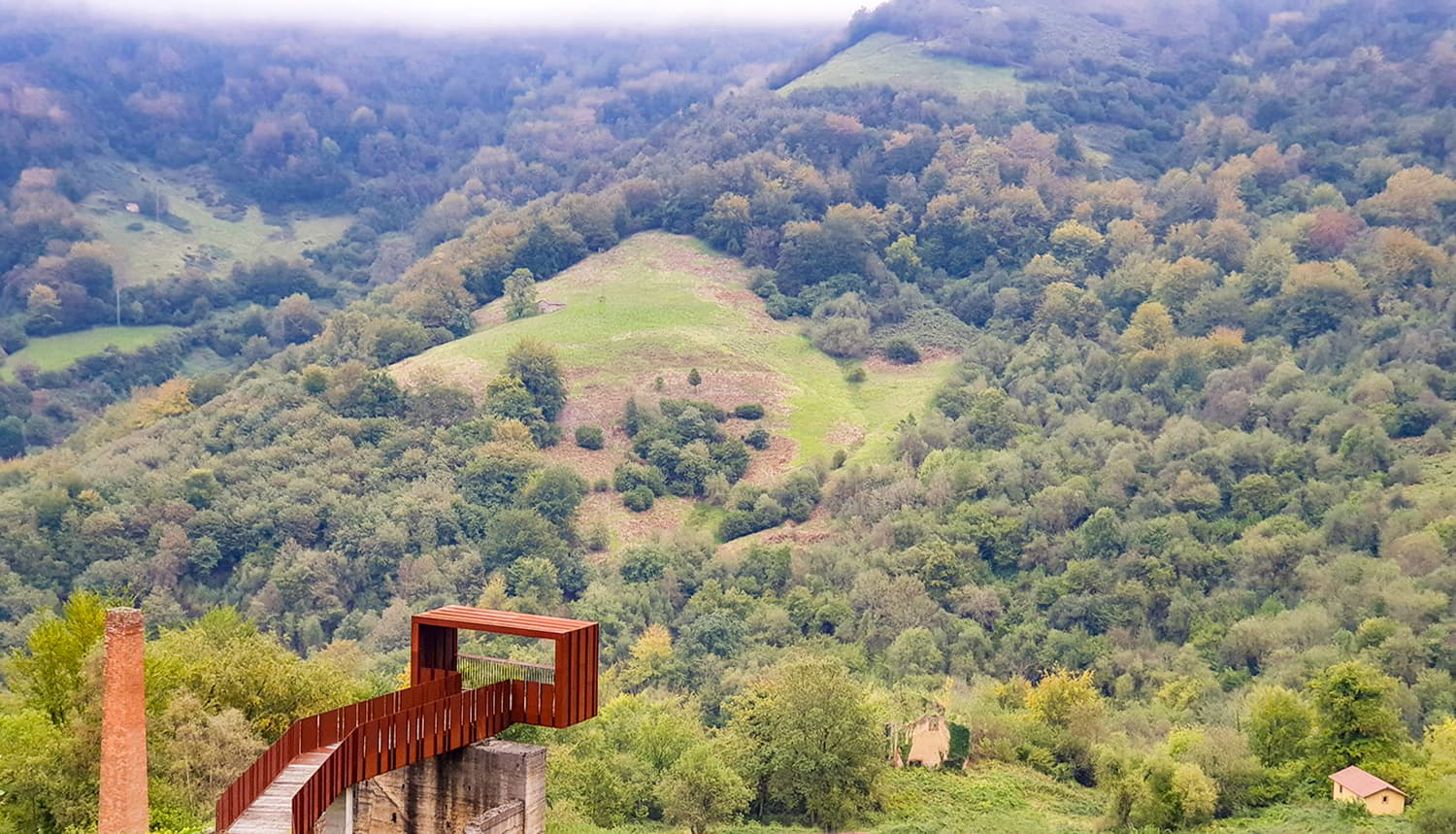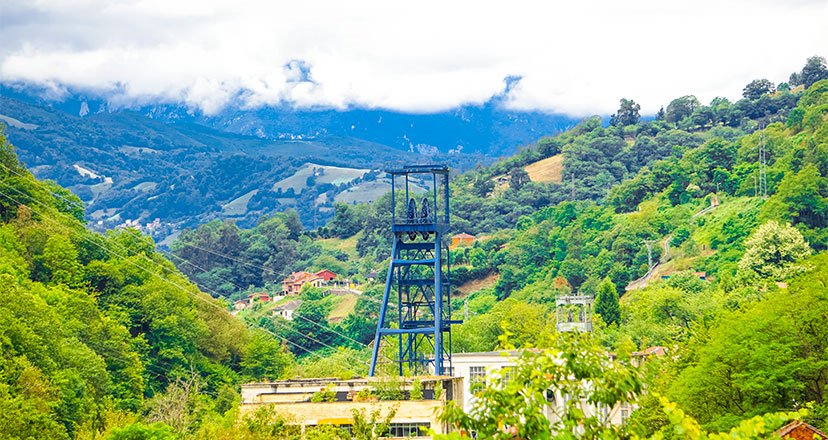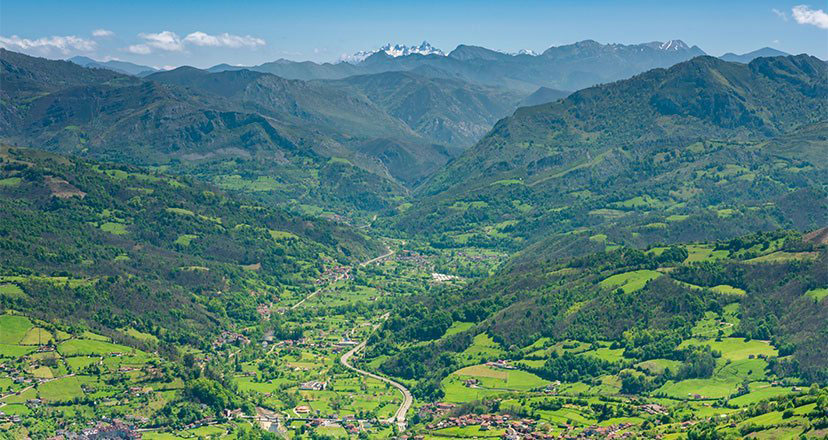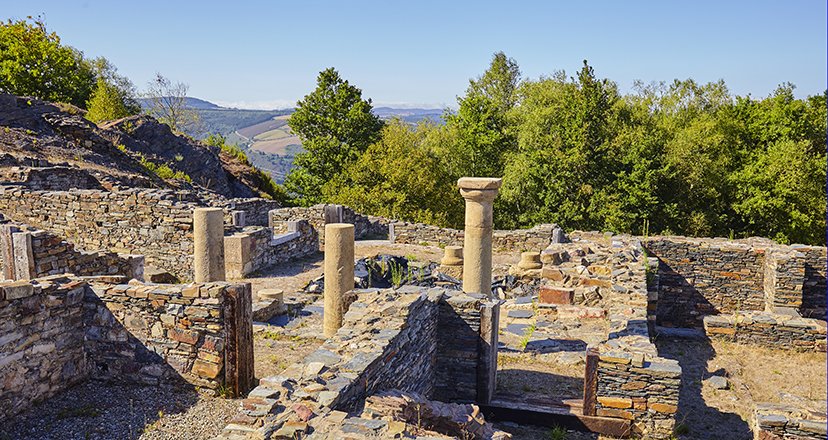Back The Bustiello Mining Village, a symbol of industrial heritage in Asturias
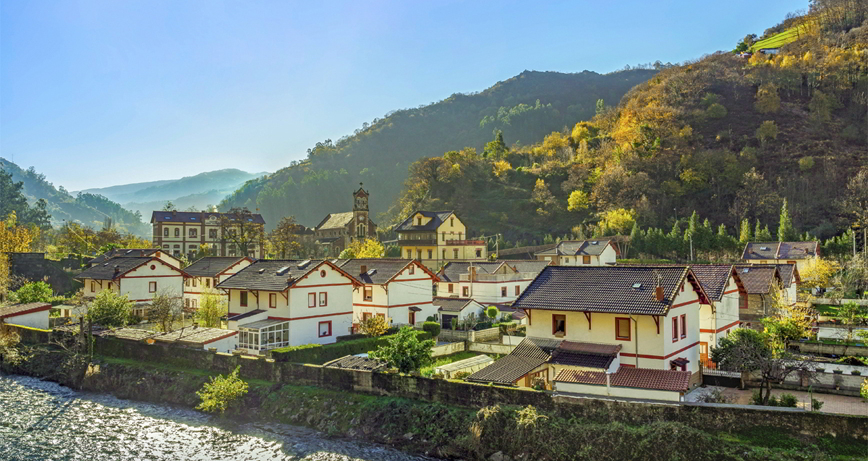
The Bustiello Mining Village, an outstanding symbol of industrial heritage in Asturias.
The mining town of Bustiello is a jewel of Asturian industrial heritage, located in the heart of Asturias, in the heart of the mining basin. It has a curious history that you will love to learn about.
In the heart of Asturias, in the middle of the Cuenca Minera, the II Marquis of Comillas carried out a utopia that, even today, would be the dream of any middle-class worker. The Marquis invested part of his fortune in building a golden cage, designed, among others, by Domenech i Montaner - considered the father of modernism -. This is the Bustiello Mining Village, in the council of Mieres, a jewel of Asturian Industrial Heritage, declared an Asset of Cultural Interest in its entirety, and open to visitors at any time of the year.
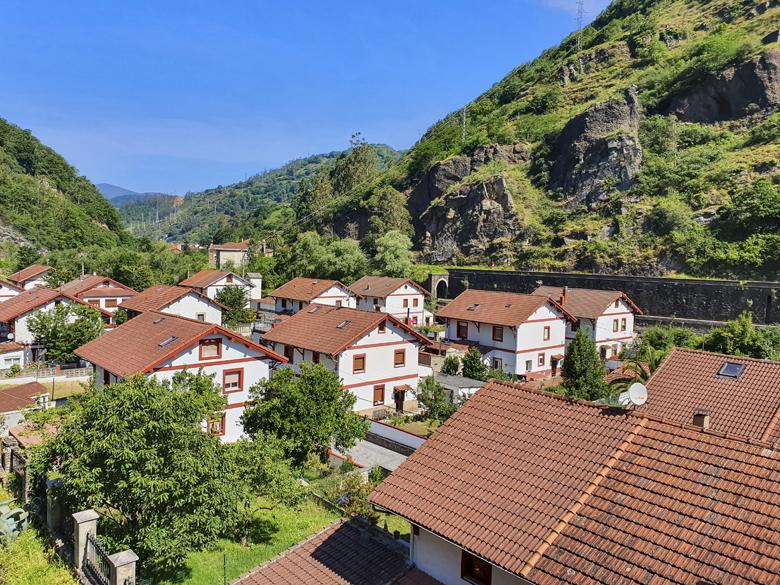
Who and why? The Bustiello story
Antonio López y López was the Marquis of Comillas from 1878 until his death in 1883. It was his son, Claudio López Bru, who inherited the marquisate and his great fortune. Part of this empire was made up of the companies: Compañía Trasatlántica, Ferrocarriles del Norte (now Renfe) and Sociedad Hullera Española. The latter was essential for supplying coal to its own ships and trains.
At the end of the 19th century, the Sociedad Hullera Española had wells in the municipalities of Aller, Lena and Mieres. Claudio López Bru was committed to industrial paternalism. He designed an urban development project where his workers could live with all the comforts and advances of the time, a dream urbanisation!
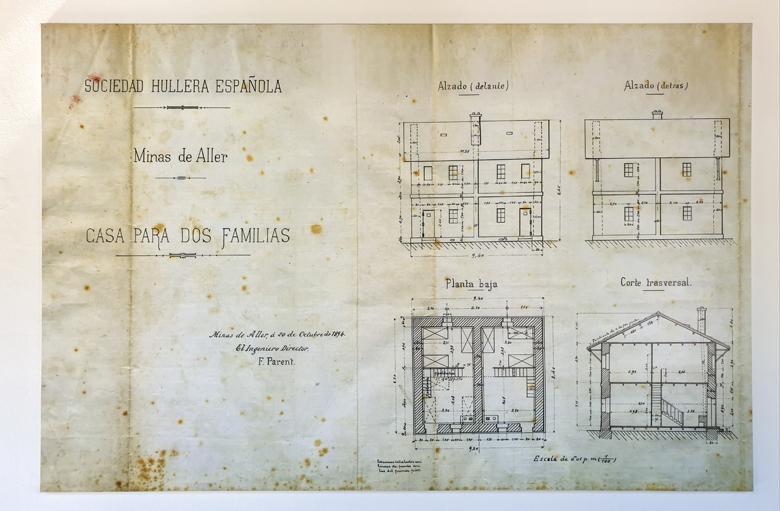
He built two-family plots with a house and vegetable garden, running water, electricity, sewage, etc. Without having to leave the area, they could do their shopping at the commissary, go to the sanatorium, the school, the church or the casino. A perfect utopia where the workers lived under their rules and conditions.
Enter the Mining Village of Bustiello
Although access to the settlement is free, my advice is to go on the guided tour that starts at the Interpretation Centre, located in the old Engineer's House.
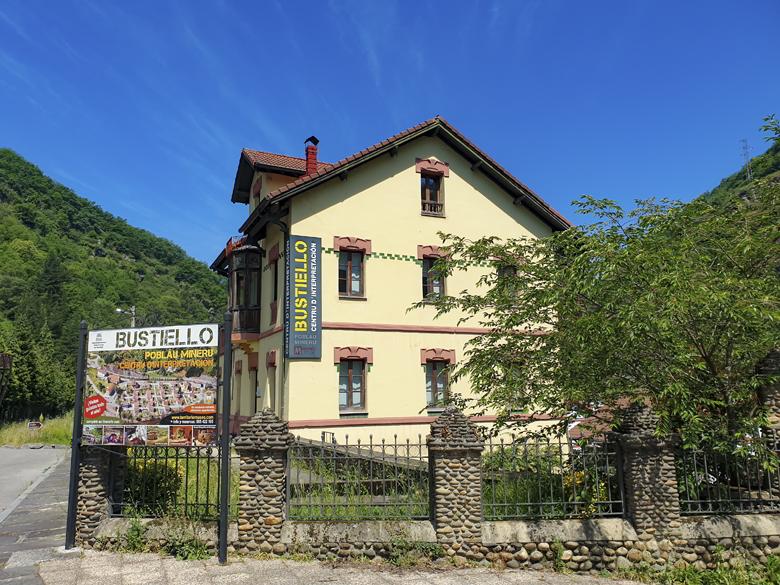
The guide from Territorio Museo will accompany you on the tour while she explains in detail and with care every argument that justifies the heritage value of Bustiello.
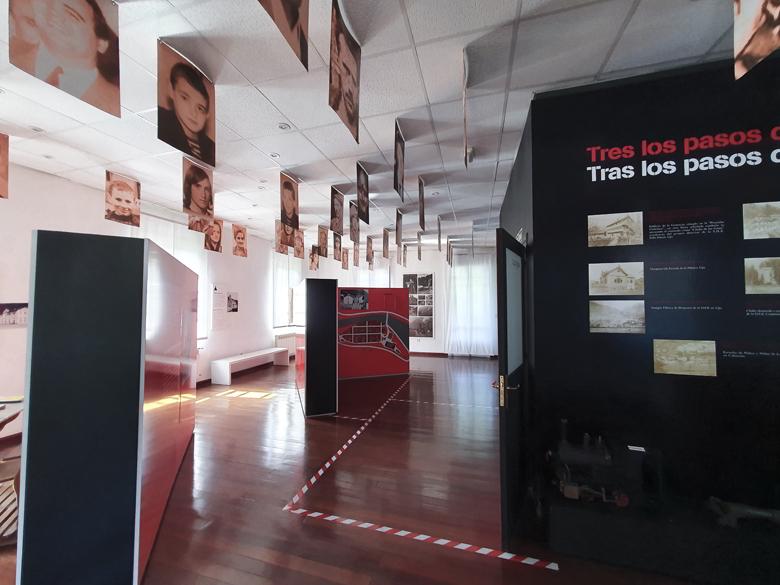
The next stop is the Church of Bustiello, the most representative building in the complex and also the most surprising.
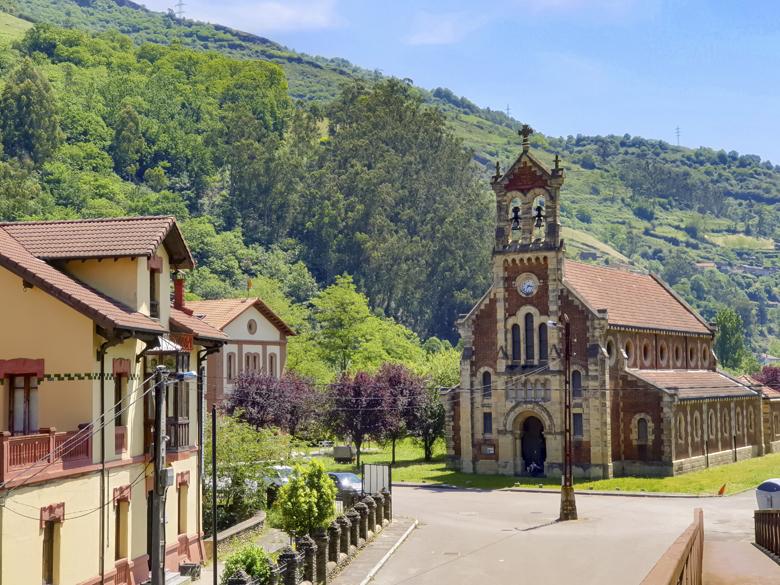
The church, in industrial style, was built in 1890 with materials of excellent quality and is full of details that give it a spectacular artistic level. It was the first building in the village, as it was a prerequisite for the formation of a new parish.
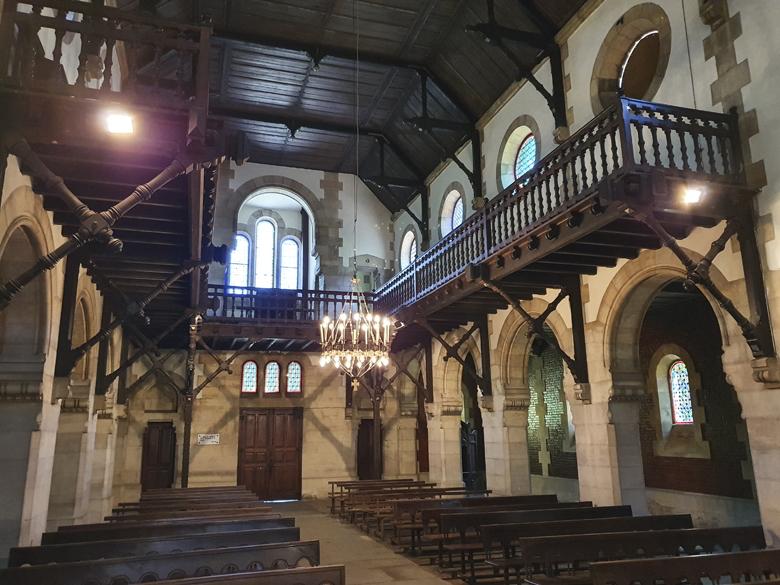
During the guided tour, you will discover nods to mining in the altar, the serial stained glass windows and the entrance gate.
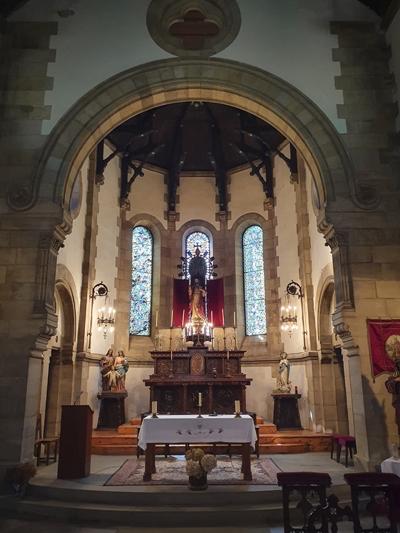
They also explain the reason for the incredible resemblance with the Church of San Juan de Luz (France), birthplace of the engineer in charge of the work. Of course, being a church for mining families, it is dedicated to Santa Bárbara, patron saint of Asturian miners since the company imposed its celebration in Bustiello.

Practical information for visiting the Mining Village of Bustiello
Reservations must be made by telephone on 985 422 185 or by e-mail: info@pozuespinos.com.
The guided tour is available for individuals and groups. The price is 5€/person, with special rates for groups.
Opening times:
- At Easter, July and August they conduct guided tours from Wednesday to Sunday morning and afternoon: from 11.00 to 14.30 and from 16.00 to 18.30 hours.
- From September to June they are open on Saturday mornings and afternoons. Sundays and public holidays, mornings only.
- Closed for holidays from 10 January to 15 February, as well as on Christmas holidays.
There is a large free car park at the entrance to the village or, if you prefer, you can get there by public transport (Mieres-Valdefarrucos line).
Keep exploring the area...
Continuing with industrial tourism, I recommend a guided tour of the Turón Valley. In a couple of hours you will discover the Socavón la Rebaldana, the Pozu Fortuna with its underground powder magazine, and the Pozu Espinos with its peculiar extraction tower.
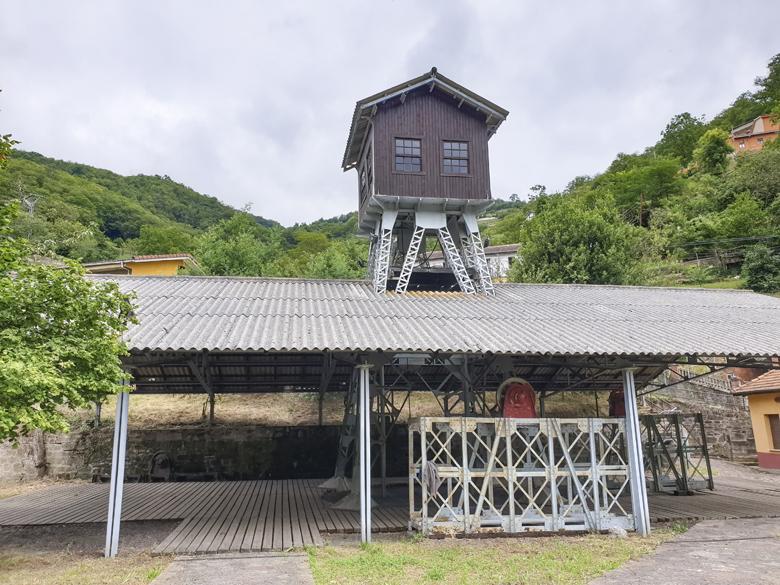
The visit, once again organised by Territorio Museo, covers part of the 14 kilometres of the old mining railway line, now converted into a Green Trail. If you do the whole route you will find old locomotives, mine shafts and villages, engine houses, etc. It is a path that has been adapted for bicycles.
After the walk you can "rehydrate" with some cider in one of the most famous squares in Asturias, the Plaza de Requexu (in the centre of Mieres del Camín, capital of the council).
In the neighbouring council of Lena, visit one of the jewels of Asturian pre-Romanesque architecture, Santa Cristina de Lena, declared a World Heritage Site by UNESCO. Also of note are the sites of La Carisa, the main Roman road in Asturias. There are four sites included in the BIC (Bien de Interés Cultural) list: Pico L.lagüezos, the camp of Monte Curriel.los, the fortification of El Homón de Faro and the latest discovery, the site of Carraceo (it shares territory with the council of Aller).
In the council of Aller, close to the Xurbeo Waterfall Route, is the Vía Carisa Interpretation Centre (CIVICA), a museum that houses replicas of the findings of the excavations and reviews the Romanisation of the Asturian territory. CIVICA is open at weekends and holidays in the mornings and afternoons, and usually organises exhibitions and activities designed for the enjoyment of the youngest members of the family.
Text and photos: Ángela Delgado
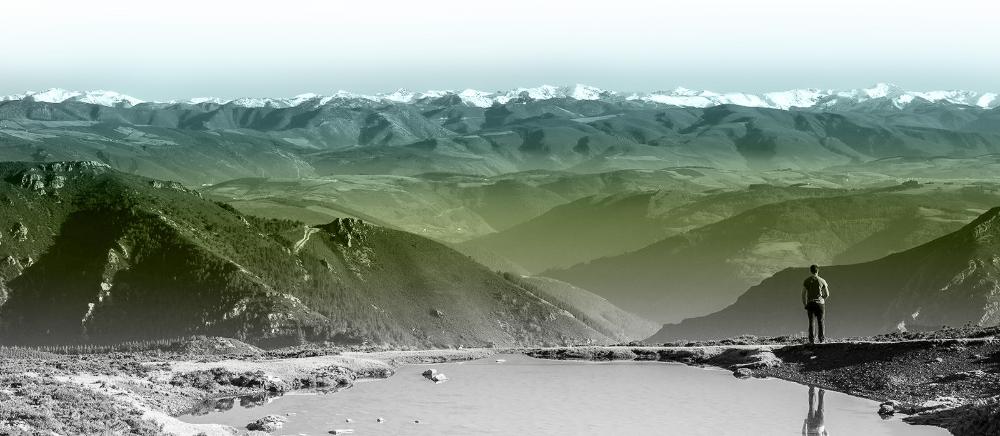
Subscribe to our newsletter and take advantage of offers, discounts, and news
Subscribe


